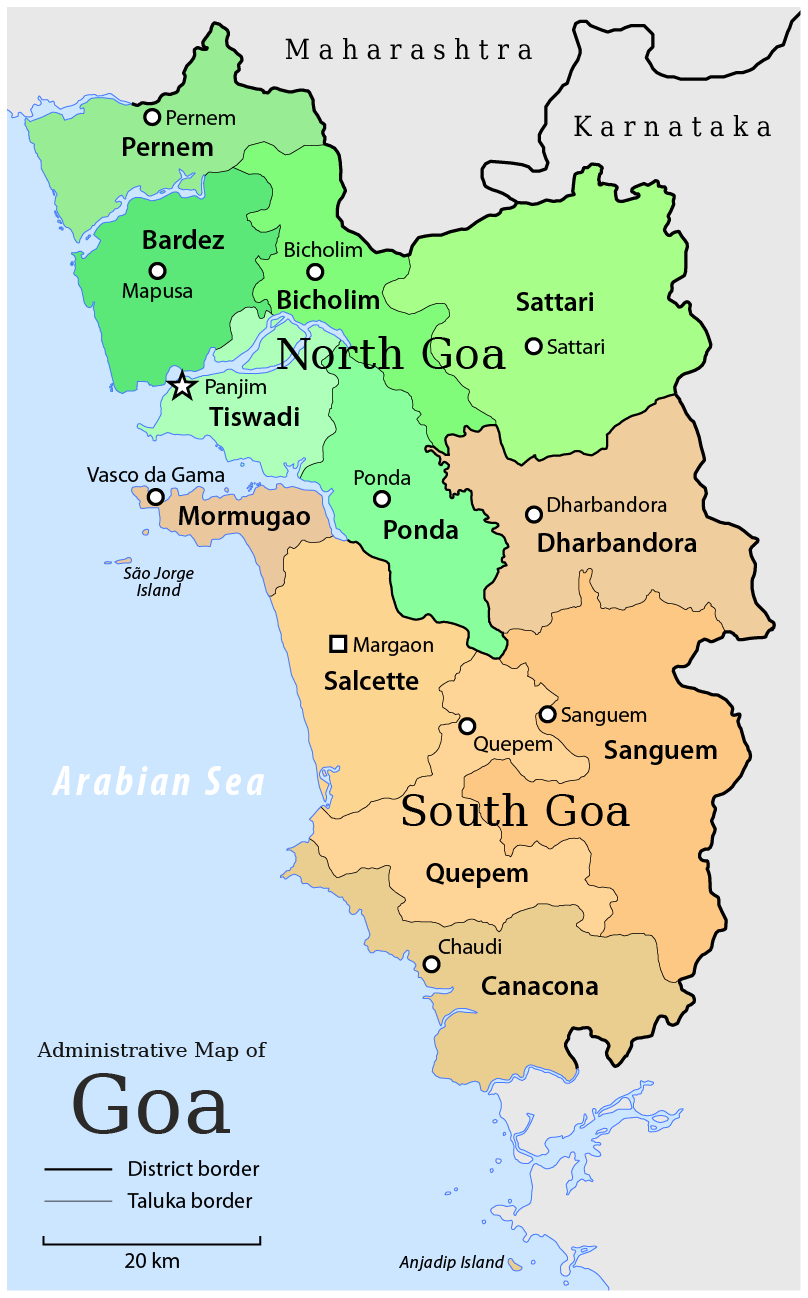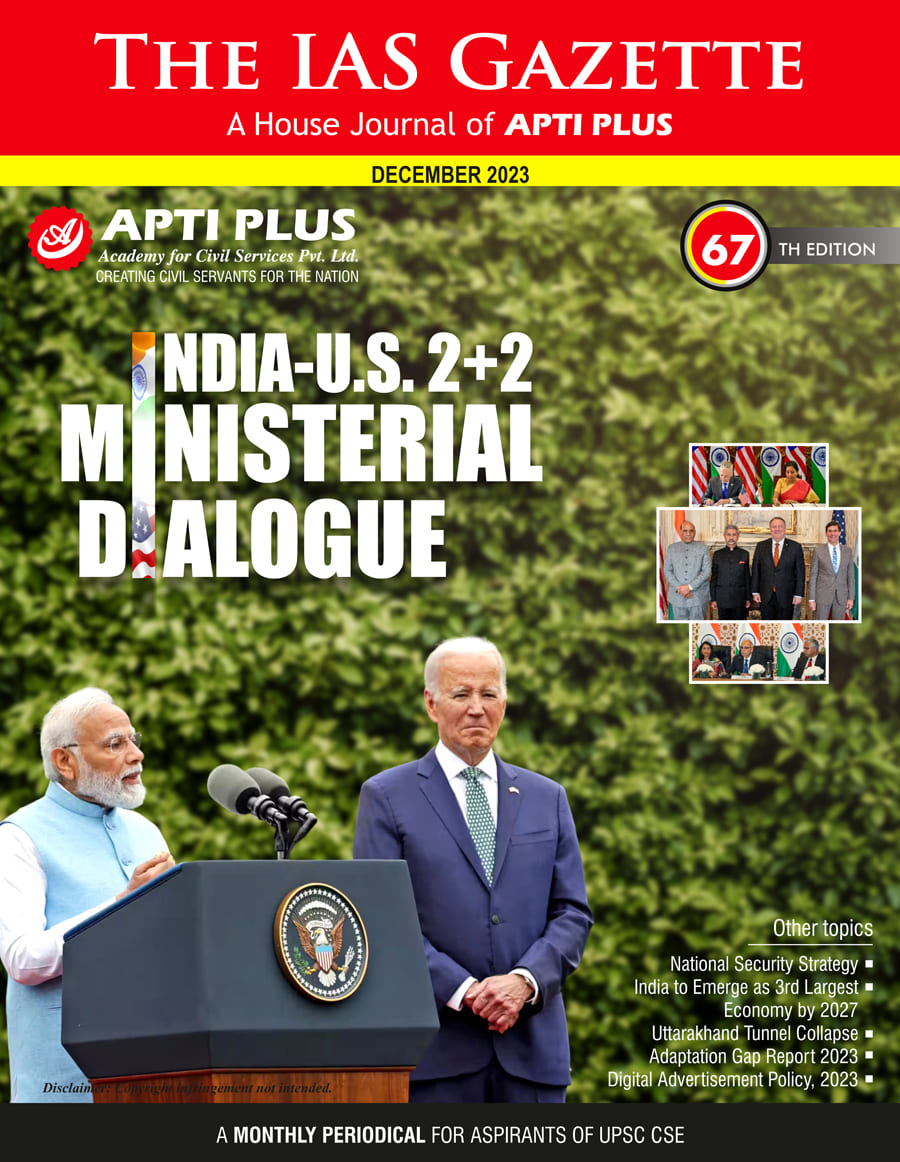
Disclaimer: Copyright infringement not intended.
Context
The Prime Minister, Shri Narendra Modi has extended his best wishes on the occasion of Goa Liberation Day.
Details
- Goa Liberation Day is celebrated on December 19th each year to commemorate the liberation of Goa from Portuguese colonial rule.
History
- Portuguese Colonization: Goa, located on the western coast of India, was a Portuguese colony for around 450 years. The Portuguese arrived in Goa in 1510, led by Afonso de Albuquerque, and established their rule by force, making it the center of their maritime empire in the East.
- The State of India, or Portuguese India, was a significant part of the Portuguese Empire established after Vasco da Gama's discovery of a sea route to the Indian subcontinent in 1498.
- This state comprised a series of forts and trading posts across the Indian Ocean, with Goa as its capital.
- Despite occasional revolts like the Conspiracy of the Pintos in 1787 and 14 local uprisings against Portuguese rule, none were successful due to lack of widespread support and comfort with Portuguese rule among the majority.
Vasco da Gama's Expedition (1498):
- Vasco da Gama reached Calicut on the Malabar Coast on May 20, 1498, marking the first Portuguese encounter with the Indian subcontinent.
- The Portuguese faced initial challenges with local customs duties and conflicts with Arab merchants.
Pedro Álvares Cabral's Voyage (1500):
- Cabral sailed to India in 1500 and established a factory at Calicut.
- Conflict erupted when the Portuguese factory in Kozhikode was attacked by locals, resulting in Portuguese retaliation.
João da Nova's Expedition (1501):
- Nova's fleet discovered Ascension and Saint Helena islands and engaged in a significant naval battle with the Zamorin of Calicut.
Vasco da Gama's Second Voyage (1502):
- Gama returned to India, bombarding Calicut and engaging in conflicts with local rulers.

Afonso de Albuquerque's Leadership (1503):
- Albuquerque erected a fort in Cochin and opened a trading post in Kollam.
Expansion and Key Events (Early to Mid-16th Century):
- Francisco de Almeida's Appointment as Viceroy (1505): Francisco de Almeida, the first viceroy, established his base at Fort Manuel after negotiations with the Kingdom of Cochin in 1505, making it a protectorate of Portugal. Almeida established forts in Anjediva, Cannanore, Cochin, and Quilon.
- Goa was conquered from the Bijapur Sultanate in 1510, becoming a key port for Portuguese armadas.
- Conflicts and Engagements (Early 16th Century): Battles and clashes occurred at Cannanore, Chaul, and Dabul with Egyptian and Gujarat Sultanate fleets.
Development and Evolution (16th to 17th Century):
- Portuguese Settlements and Expansion (16th Century): Portuguese established settlements in the Coromandel region and acquired territories from the Sultan of Guzerat.
- Ottoman–Portuguese Conflicts and Siege of Diu (1538): The Ottoman Empire attempted to siege Diu but was ultimately defeated.
Later Years and Shifts (17th to 19th Century)
- Maratha Sieges and Portuguese Losses (17th Century): Marathas attempted sieges against Portuguese settlements in the Konkan region.
- The viceroy of Goa had authority over Portuguese possessions across the Indian Ocean until the 18th century, including regions from Southern Africa to Southeast Asia.
- Over time, Portuguese control was limited to the Canara, Cambay, and Konkan regions on India's west coast.
- British Influence and Changes (18th Century): The British influenced Portuguese territories, impacting Goa and surrounding regions.
- Mumbai (Bombay) was part of Portuguese India until it was given to Charles II of England as part of Catherine de Braganza's dowry in 1661.
- By the 20th century, Portuguese India comprised three main administrative divisions: Goa, Daman (including Dadra and Nagar Haveli), and Diu.
Emergence of the Independence Movement:
- In the early 20th century, the abolition of the Portuguese monarchy in 1910 raised hopes for self-determination in the colonies. However, when colonial policies remained unchanged, an organized anti-colonial movement emerged.
- Civil liberties were curtailed through censorship, and dissent was met with repression. Critics condemned the restrictions on press freedom and the church's support for pro-colonial policies.
Growth and Strategies of the Movement:
- By the 1940s, the movement gained momentum, inspired by India's independence movement. Leaders like Ram Manohar Lohia and Luís de Menezes Bragança actively criticized colonial policies.
- Different political factions emerged with conflicting agendas on Goa's future – merger with neighboring states, independence, or autonomy under Portuguese rule.
- Mahatma Gandhi attempted to unite these factions under a common objective of achieving civil liberties but faced challenges due to disparate perspectives.
Diplomatic Efforts and Revolutionary Groups:
- Diplomatic efforts between India and Portugal aimed at negotiations for Goa's integration into the Indian Union were unsuccessful. Portugal remained reluctant to cede control.
- Revolutionary groups like the Azad Gomantak Dal and Goa Liberation Army utilized direct action strategies against Portuguese colonialism.
Satyagraha Movement and Annexation:
- From 1953 onwards, the Satyagraha movement intensified. However, Indian Prime Minister Nehru's lack of support for the Satyagrahas impacted the momentum of the movement.
- Various attempts, including peaceful protests and armed incursions, were made to challenge Portuguese control. The Portuguese responded with force, resulting in casualties.
Annexation by India:
- Operation Vijay: On December 18, 1961, the Indian Armed Forces launched "Operation Vijay," a military campaign to liberate Goa, Daman, and Diu from Portuguese rule. The operation was successful, and on December 19, 1961, Goa was officially annexed to India, marking the end of Portuguese colonial rule in the region.
- Following failed negotiations and increased tensions, India ordered military action. Indian Armed Forces successfully captured Goa with minimal resistance in December 1961.
- Subsequently, Goa, Daman, and Diu were integrated into the Indian Union as a Union Territory through the 12th Amendment Act to the Indian Constitution in 1963.
Post-Annexation Developments:
- In later years, a referendum was held, rejecting merger with Maharashtra. In 1987, Goa became a separate full-fledged state, while Daman and Diu continued as a Union Territory.
Aftermath of Annexation:
- Establishment of Indian Control: Following the end of Portuguese rule, Goa was placed under Indian military administration, subsequently transitioning to civilian governance.
- Local Governance: Military rule was replaced by civilian administration, with the formation of a Consultative Council to assist in governing the territory.
International Reactions and Consequences:
- Global Reactions: The international response to the annexation was mixed, with India perceiving it as a liberation while Portugal viewed it as aggression against its sovereignty. There was a blend of praise and condemnation worldwide for India's action.
- Continued Tensions: The annexation led to strained relations between India and Portugal for a period, reflecting differing perspectives on the event.
Dadra and Nagar Haveli:
- A similar conflict unfolded in Dadra and Nagar Haveli, separate Portuguese enclaves surrounded by Indian territory.
- The Indian government supported pro-Indian forces, leading to their eventual occupation by Indian authorities.
Legal Aspects and Disputes:
- Portugal appealed to the International Court of Justice regarding Dadra and Nagar Haveli, with a ruling that recognized Portugal's sovereignty but upheld India's right to deny passage over Indian territories.

India Portugal Relations
Historical Context and Evolution of Relations:
- Early Phase (1947-1961):
- India established diplomatic relations with Portugal soon after gaining independence in 1947.
- Relations declined in 1950 due to Portugal's refusal to surrender its enclaves.
- Indian military action under Operation Vijay led to the liberation of Goa in December 1961.
- Diplomatic relations remained strained until the Portuguese Carnation Revolution in April 1974.
- Re-establishment of Relations (1974-1975):
- Diplomatic relations improved after the Carnation Revolution, and a treaty recognizing India’s sovereignty over Goa, Daman & Diu, Dadra & Nagar Haveli was signed in December 1974.
- The treaty came into force in June 1975, restoring diplomatic ties between India and Portugal.
Current Status of Political Relations:
- Mutually Warm and Friendly Relations:
- Portugal views India as a vibrant democracy with strong historical and cultural ties.
- Portugal supports India’s permanent membership in the United Nations Security Council (UNSC) and the Nuclear Suppliers Group.
- Initiatives and Collaboration:
- Portugal initiated the idea of an India-EU Summit, which led to the first India-EU Summit held in Lisbon in 2000.
- Collaboration in international forums and mutual support in various diplomatic initiatives.
Economic and Trade Relations:
- Growing Economic Ties:
- Economic relations between India and Portugal are expanding, focusing on trade, investment, and business collaborations.
- Efforts to explore opportunities in technology, renewable energy, and tourism sectors.
- Major Exports:
- India exports textiles, agriculture products, machinery, vehicles, among others to Portugal.
- Portugal exports machinery, minerals, chemicals, textiles, and more to India.
Cultural Impact and Defense Cooperation:
- Cultural Syncretism and Exchanges:
- Portuguese influence led to cultural syncretism, impacting architecture, cuisine, and language in India.
- Cultural exchanges between the nations have promoted understanding and appreciation of heritage.
- Defense and Security Collaboration:
- Signed a MoU on defense cooperation in 2017, exploring collaborations in counter-terrorism and defense initiatives.
Challenges and Opportunities:
- Trade Enhancement and Diversification:
- Opportunities for increasing bilateral trade, especially in technology, renewable energy, and pharmaceutical sectors.
- Cultural Understanding and People-to-People Ties:
- Promoting greater cultural understanding and strengthening people-to-people ties for a stronger relationship.
- Addressing Global Challenges:
- Collaboration on global issues like climate change, public health, and counter-terrorism for joint efforts and mutual benefits.
About Goa
Geography and Demographics:
- Location: Goa is situated on the western coast of India, bounded by the Arabian Sea to the west and the Western Ghats to the east.
- Area: It covers an area of approximately 3,702 square kilometers.
- Capital: Panaji (Panjim) is the state capital, while Vasco da Gama is the largest city.
- Population: As of 2022, the population was around 1.5 to 1.8 million people, with a diverse mix of cultures and communities.
History:
- Heritage Sites: The state boasts numerous historic sites, including forts like Aguada Fort, Chapora Fort, and historical landmarks like Basilica of Bom Jesus, known for housing the remains of St. Francis Xavier.
- Cultural Fusion: The colonial legacy is visible in Goa's architecture, cuisine, and religious practices, blending with the native Konkani culture.
Culture and Lifestyle:
- Languages: Konkani is the official language, but English, Hindi, and Marathi are also widely spoken.
- Festivals: Goa is famous for its vibrant festivals like Carnival, Shigmo, Ganesh Chaturthi, Diwali, and Christmas, celebrated with great enthusiasm.
- Music and Dance: It is a hub for music lovers, hosting various music festivals, including Sunburn and Supersonic, focusing on electronic dance music (EDM). Traditional Goan music and dance forms like Dekhnni and Fugdi are also prominent.
Cuisine:
- Seafood Delicacies: Goan cuisine is renowned for its seafood dishes, influenced by Portuguese flavors. Dishes like Vindaloo, Xacuti, Balchão, and Fish Curry are popular.
- Feni: It's a traditional alcoholic drink made from cashew or coconut sap and is a significant part of Goan culture.
Tourism:
- Beaches: Goa is famous for its pristine beaches such as Calangute, Baga, Anjuna, and Palolem, attracting domestic and international tourists alike.
- Adventure Sports: Water sports like parasailing, jet-skiing, and scuba diving are popular activities in coastal areas.
- Ecotourism: Inland, the state offers lush greenery, wildlife sanctuaries like Bhagwan Mahavir Wildlife Sanctuary and Mollem National Park, and spice plantations for eco-tourism.
Economy:
- Tourism: The tourism industry is the primary economic driver, contributing significantly to Goa's economy.
- Mining and Agriculture: Historically, mining (iron ore) and agriculture (mainly of rice, coconuts, cashew nuts, and spices) have been other important sectors.
Conclusion
Goa Liberation Day is a momentous occasion that signifies the triumph of freedom over colonial oppression. It is a reminder of the sacrifices made by the people in their struggle for independence and serves as a celebration of Goa's rich cultural heritage within the diverse tapestry of India. The day is observed with reverence, patriotism, and a celebration of the unique Goan identity.
|
PRACTICE QUESTION
Q. Discuss the significance of Goa Liberation Day in India's history and its impact on the country's socio-political landscape. (250 Words)
|
















